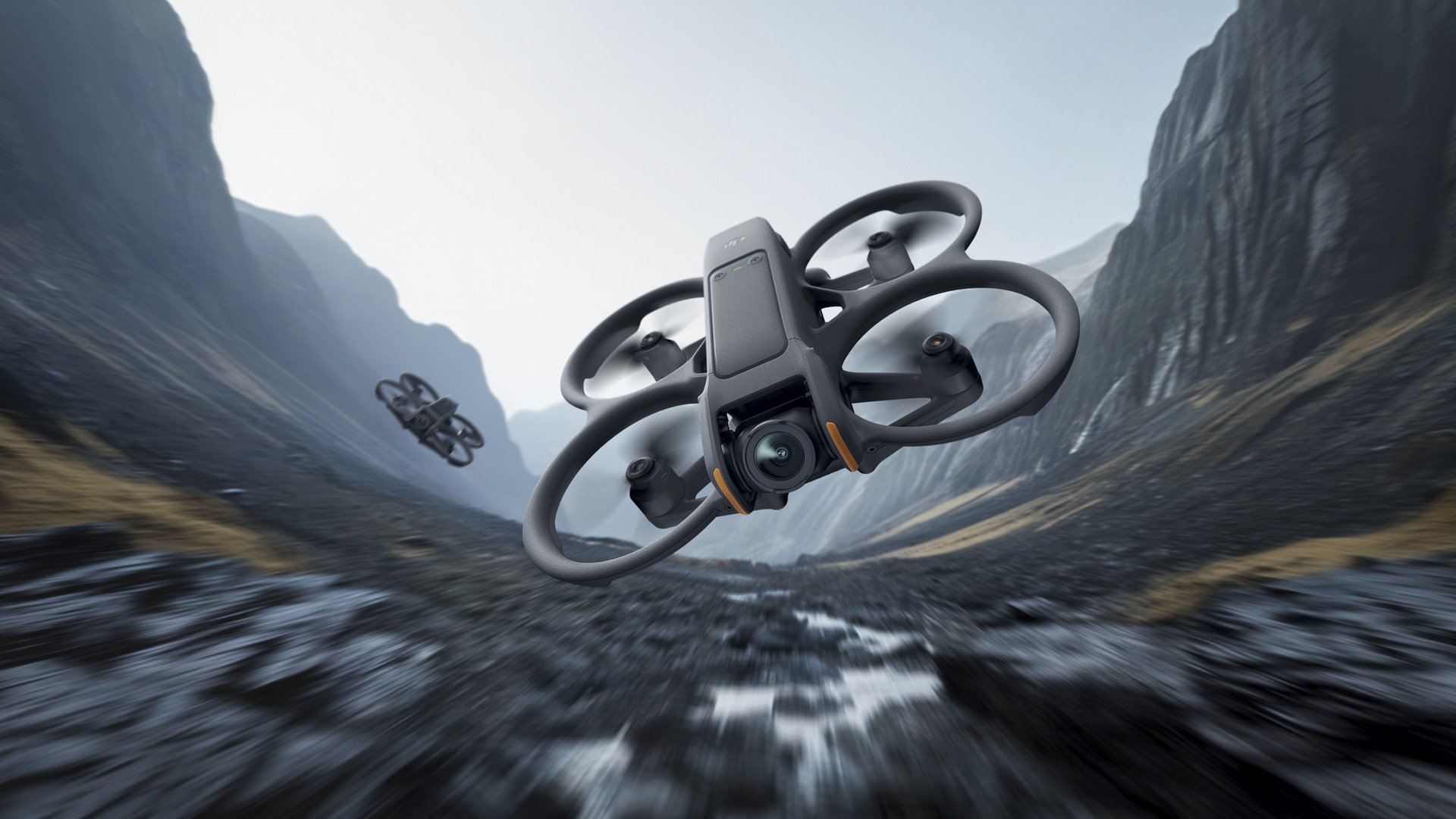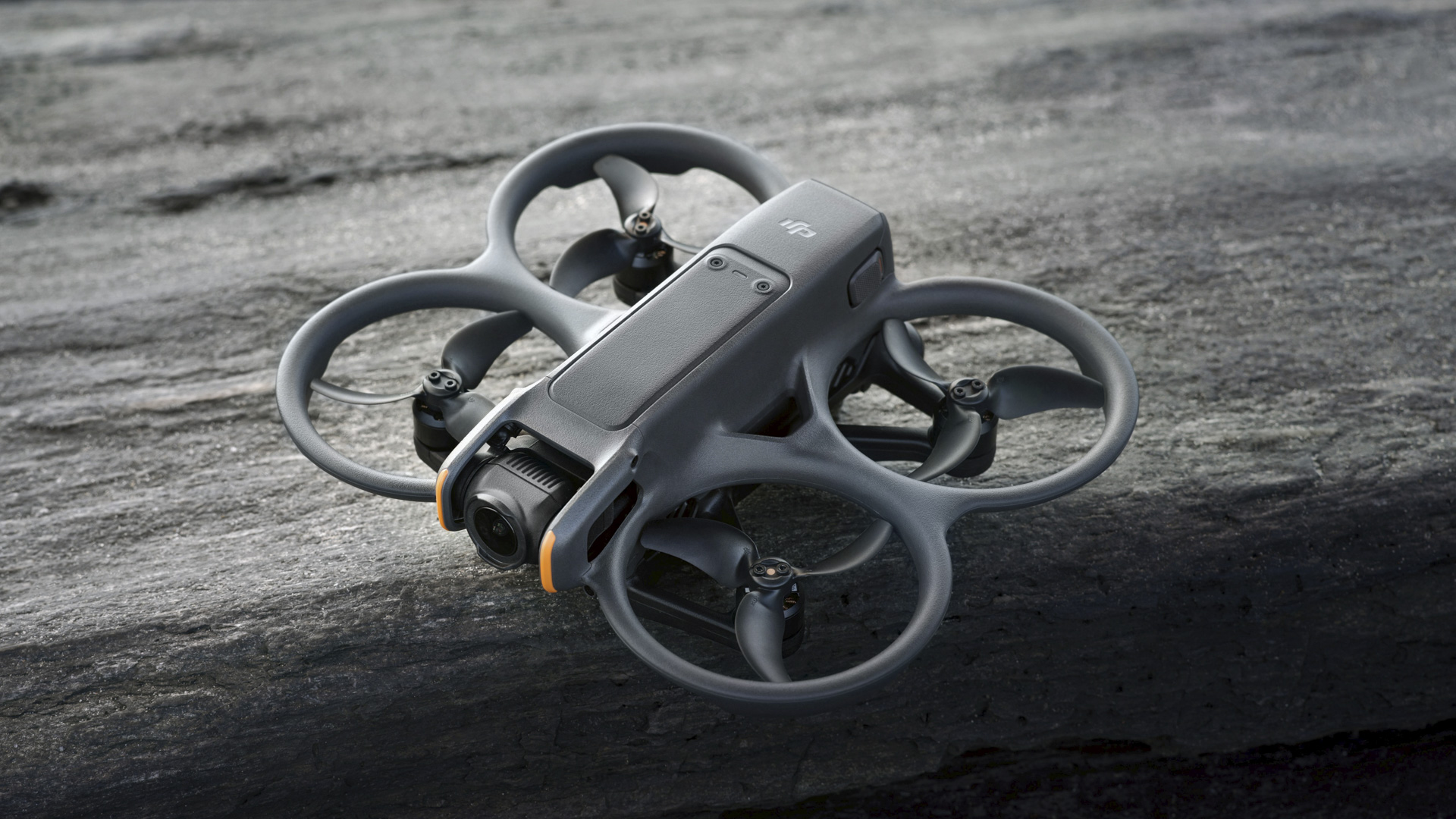DJI Neo: the latest rumors and everything we know so far about DJI’s tiny drone
What to expect from DJI’s little flier

DJI’s next drone will be a tiny flying machine that takes off from your palm, and will likely work with FPV (first-person view) headsets – if the latest DJI Neo rumors are correct.
A growing series of leaks suggest the DJI Neo could be the company's lightest drone so far and the spiritual successor to the DJI Spark. Even better, the Neo could also become the most affordable drone in DJI’s line-up, with a rumored launch price of just $220 / £167 / AU$325 or $350 / £295 / AU$550 for a Fly More Combo.
Based on what we've seen so far, the DJI Neo is shaping up to be a fun, affordable flying machine designed to compete with the best beginner drones. It's been tipped to borrow in-flight features from some of the best DJI drones, including QuickShots and new AI-powered subject tracking, to deliver a drone experience that makes it easy to shoot aerial video, indoors and out.
Hello #DJINeo, this Mini 5 is obviously made to be the successor of the DJI Spark with direct QuickShots and one click flying. If these pictures are real, I think release is a matter of weeks. Hopefully it will fly FPV aswell. Follow for more leaks. Cheers! pic.twitter.com/kKZYa1hyXJJuly 31, 2024
What’s really got DJI fans talking is the design: leaked images show the Neo as a smaller version of the DJI Avata 2, complete with protective propellor guards. With that comes the exciting prospect of potential FPV support.
To give you an overview of what might be in store with the DJI Neo, we’ve rounded up all of the information that’s currently circulating online. From a possible release date to expected features, you’ll find all of the latest news here.
DJI Neo: Rumored release date and price
- Leak suggests release date of August 20
- Rumored Fly More Combo price of $329 (or around £320 / AU$515).
One of the most exciting rumors around the DJI Neo is its price. A post from DroneMood on X (formerly Twitter) provided pricing information from what looks like an early Walmart listing. That pitches the DJI Neo Fly More Combo at just $329, which would probably work out at around £299 / AU$589.
This has been backed up by a subsequent post from @JasperEllens, which leaks what is apparently the DJI Neo’s retail packaging. It suggests that the Fly More Combo bundle will include three batteries, a charging hub and some spare propellers, along with propeller guards, a screwdriver, a type-C cable and a remote controller. The caption also backs up the claim of a $329 launch price.
Get daily insight, inspiration and deals in your inbox
Sign up for breaking news, reviews, opinion, top tech deals, and more.
Finally, an unboxing video by Italian YouTuber enontheroad seemingly shows the actual drone picked up in a DJI store in Malaysia, together with what is claimed to be the list price according to a DJI representative: €199 which is around $220 / £167 / AU$325, or €350 for a Fly More Combo which equates to around $350 / £295 / AU$550.
This would make the DJI Neo a very competitive alternative to the recently announced HoverAir X1 Pro, a similarly-sized drone which is sold with a combo kit for $499 (about £380 / AU$730. At this price, we could see the Neo becoming one of DJI’s most popular drones, especially with some of the rumored features detailed below.
👉Just to add interest to the previous post about DJI Neo. I'll leave it to you to review and discuss. 😋#dji #djineo pic.twitter.com/12m6DrT2xaAugust 6, 2024
As for a release date, well that's now official since DJI itself has teased the product on X (formerly Twitter). The three-second video (see below) confirms the product name as Neo, together with the announcement date and time, which will be on September 5 at GMT+8 (that's 6am PT / 9am ET / 2pm UK time).
The Future Takes ShapeSeptember 5, 2024 | 9 AM (EDT)Get notified 👉 https://t.co/lkRTa2dIcv pic.twitter.com/VIvnfCobCnAugust 29, 2024
DJI Neo: Design and build
- Neo could be DJI’s smallest, lightest drone ever
- Guarded propeller design is similar to the Avata 2
DJI’s latest drone could be its tiniest to date: according to a post from frequent leaker @JasperEllens on X, we have what seem to be the Neo’s dimensions – and they’re certainly travel-friendly.
Based on a leaked product listing from an online Mexican retailer, the Neo could measure in at just 157x130x49mm. That would make it comfortably DJI’s smallest official drone yet (if you don't include the DJI-powered Ryze Tello).

In another post, @JasperEllens also shares the rumored weight of the DJI Neo, which appears to hit the scales at a featherweight 135g. That would make it significantly lighter than the DJI Mini Pro 4 (249g).
While the Ryze Tello, which uses DJI tech, is lighter at 80g, that drone is made by Chinese manufacturer Ryze. That means the Neo would technically be the lightest drone ever launched by DJI.
Some webshop in Mexico didn't hide the #djineo properly: the dimensions are 15.7 x 13 x 4.9 cm. That's about 5 stacked CD-rom boxes (for who remembers). It should take more than a week before we see more photo's popping up. Cheers pic.twitter.com/w5nEzUjvUAAugust 3, 2024
We also have a good idea of what the DJI Neo will look like. A video posted on X by @OsitaLV, a leaker with a solid track record, shows a compact drone with circular guards around all four propellers.
A later post from @JasperEllens provides an even clearer image, showing a palm-sized drone with removable propeller cages and a body that loosely resembles the design of the DJI Avata series. This similarity to DJI’s existing FPV (first-person view) drones has triggered speculation as to whether the Neo will have FPV capabilities.
What that photo also appears to confirm is that the Neo won’t have a foldable design like many of the best DJI drones. As a result, it won’t be much more compact than a folded DJI Mini 4 Pro. The size difference will only be noticeable in flight, where the Neo will be a much smaller package – as revealed by this useful size comparison from @hakasushi.
A separate post from @hakasushi puts the Neo side-by-side with the Avata 2, based on the leaked dimensions, highlighting the design similarities, but also the substantial size difference.
DJI Neo: Camera setup
- Camera setup appears to be a tilting gimbal
- Leaked specs promise "4K Ultra-Stabilized Video"
Despite the numerous leaks circulating around the DJI Neo, we know precious little yet about its camera setup. Crucially, it’s not clear whether the DJI Neo is a flying selfie camera to rival the HoverAir X1, or a cinewhoop-style drone for FPV flight.
Leaked images show a front-mounted lens which appears to pitch on a tilting mechanical gimbal. Given that both the HoverAir X1 and DJI Avata 2 use similar setups, this design doesn’t confirm either way what type of flying experience the DJI Neo will offer.
Whether it’s an FPV or flying selfie camera, it’s safe to assume that the DJI Neo will have a fixed-focus, fixed aperture lens, like both the HoverAir X1 and DJI Avata 2. We don’t yet have any information on what that aperture will be, although we’d imagine it would be somewhere between f/2.4 and f/2.8.
DJI Neo - first specs: 135 grams, AI subject tracking, 4K Ultra-stabilized, 3 batteries in the Fly more combo. Price only 329? These will sell like hot cakes. pic.twitter.com/5Lm8AUScDAJuly 31, 2024
We’re similarly in the dark about the DJI Neo’s field of view. The HoverAir X1 covers an angle of 90-degrees, while the DJI Avata 2 goes much wider at 155-degrees. Where the DJI Neo lands within this range will have a strong bearing on the in-flight experience, but isn’t necessarily indicative of whether it’s a selfie or FPV drone: different FPV pilots prefer different viewing angles.
What we do know from a @JasperEllens post, which appears to reveal the DJI Neo’s retail packaging, is that the box promises “4K Ultra-Stabilized Video” – a spec that would trump the 2.7K resolution of the HoverAir X1. Given that DJI has long set the bar for in-flight image stabilization, we’d also expect the DJI Neo to perform well in that regard.
DJI Neo: Features
- Leaks promise “AI Subject-Tracking” and “QuickShots”
- Mixed reports on whether Neo will support DJI Goggles 3
That leaked retail box also tells us more about what features to expect from the DJI Neo. Adding to the idea that the Neo will be a tiny, entertaining rival to the HoverAir X1, the packaging touts support for palm take-off and landing – a feature we’ve previously seen on the DJI Spark. This suggests the Neo will be a fun, portable drone for indoor and outdoor flight (depending on wind speeds), which you can launch straight from your hand.
So too does support for “AI Subject-Tracking” and “QuickShots”, both of which are mentioned on the packaging. As we’ve seen on other DJI drones, including the DJI Mini 4 Pro, these features make it easy for pilots to capture cinematic visuals when working solo, by automatically following subjects and executing one-touch movements in mid-air.
Spark back to life in a Mavic form? pic.twitter.com/V9B19qb5R2July 25, 2024
Conspicuously absent from the retail packaging is any mention of the headset support that would be required for FPV flight. As above, the design of the DJI Neo is one that would lend itself well to first-person piloting. It would also add to its popularity. But to work with headsets like the DJI Goggles 3, the Neo would likely need Ocusync 4 connectivity, and we haven’t seen anything to suggest its presence on the spec sheet.

A Reddit post has now surfaced featuring a software screenshot which purports to show the Neo on a list of drones with support for the Goggles 3, but we’re cautious about the source of this information. Other DJI leakers, including @OsitaLV, have previously suggested that the Neo won’t have FPV functionality.
We do have an indication of battery capacity, based on a leaked model label. This indicates a 1,435mAh cell inside the DJI Neo, smaller than the 1,480mAh battery in the DJI Spark. Real-world performance will depend on factors such as aerodynamic efficiency and wind speeds, although several posts on X (formerly Twitter) have suggested flight times of 15 or 16 minutes.
DJI Neo: Rumors round-up
With an entry-level price and tiny form factor, leaked evidence increasingly points towards the DJI Neo as a fun, portable 4K drone that carries forward the spirit of the DJI Spark – complete with support for palm take-off and landing. Its design appears to be derived from the DJI Avata series, with propeller guards that could make it safe to fly indoors. Leaked dimensions also suggest that it will be DJI’s smallest and lightest drone to date.
The keenest speculation currently revolves around whether the DJI Neo will be a flying selfie camera or an FPV drone, with support for DJI’s Goggles 3. From what we’ve seen, the leaked features point more towards the former: we think the DJI Neo is designed as a budget-friendly mini-drone that’s easy for beginners to fly almost anywhere, with helpful in-flight video features such as subject-tracking and QuickShots. However, it does look increasingly likely to support the Goggles 3 for FPV flight, too.
When you compare the low cost of the DJI Neo (rumored to be $329 for the Fly More Combo) with the much higher price of the Avata 2 ($999 / £879 / AU$1,499) for the Fly More Combo), it’s clear that the two drones are pitched at very different markets. Either way, rumors suggest that we won’t need to wait too long to find out more, with some leaks indicating a potential DJI Neo launch as early as this month.
You might also like
Formerly News Editor at Stuff, Chris now writes about tech from his tropical office. Sidetracked by sustainable stuff, he’s also keen on cameras, classic cars and any gear that gets better with age.
